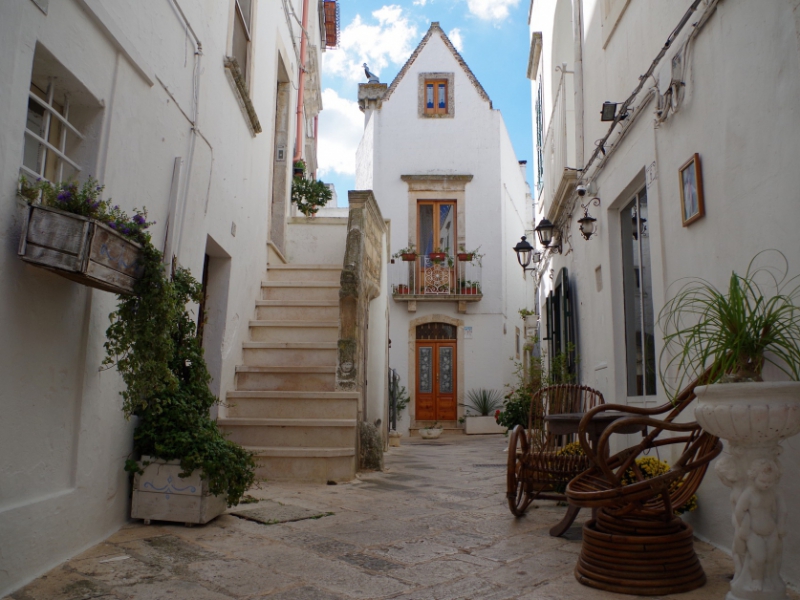Locorotondo, although so small, manages to attract and enchant visitors for the intimacy and grace it expresses, for the white that seems to envelop everything, for the cleanliness and meticulous order, for the colors of the flowers and plants that protrude from the balconies of the houses.
Just as its name evokes, the circular town develops around its beautiful Mother Church.
Among stains of holm oaks, remains of ancient bushes, vegetable gardens, vineyards, expanses of olive trees, dry stone walls and majestic fragno trees, there are trulli, farms and rural churches, often ruined, always with the typical cummerse roof. The oldest trullo in Puglia, dating back to 1559 - date engraved on the door lintel - is located in one of these fascinating districts, Marziolla district. In the charming Lamie area, the vineyards stand out against the background of ancient trulli and cummerse. The districts of Crocefisso and Serralta are also worth a visit, again for their trulli and the cummersa and Pozzomasiello buildings where a masseria stands splendid among the trees, at the end of the passaturo which in late spring winks a thousand red poppies.
It has been awarded as one of the most beautiful villages in Italy and has won the prestigious orange flag awarded by the Italian Touring Club: a mark of tourism-environmental quality awarded to small municipalities that stand out for an offer of excellence and a quality reception.
Events
Patronal feast of San Giorgio
April 22-23: the gift ceremony seals popular devotion to the saint, whose cult was introduced to the Murgia by the Lombards; today's party dates back to at least the seventeenth century.
Locus Festival
Summer music festival with concerts in the most suggestive corners of the village.
Festival of the Gnumerèdde Suffuchète
First Sunday of August: tripe rolls are generously washed down with the Locorotondo of the Cantina Sociale.
Feast of San Rocco
14-17 August: the fair in honor of the co-patron ends with a spectacular fireworks competition over the Itria Valley; the first hours of day 16 the Diana takes place, the musical procession that wakes up the citizens and prepares them for the day of celebration.
Good Food
Gnumerèdde suffuchète are lamb tripe rolls, tied with the animal's intestines and cooked for a long time in terracotta pans. Traditional also the dried white beans, cooked in the "pignata" and beaten with the addition of olive oil: an exquisite white puree comes out, to be served with field chicory (the real name of this ancient dish is "macco con vegetables") . And again: the meat in the stove, cooked in charcoal ovens with the reverberation of the live fire; tridd, handmade pasta made from durum wheat semolina and eggs, a little pecorino cheese and chopped parsley, served in turkey broth; the oven baked focaccia, and of course the orecchiette, the best known fresh pasta of the Apulian cuisine.
